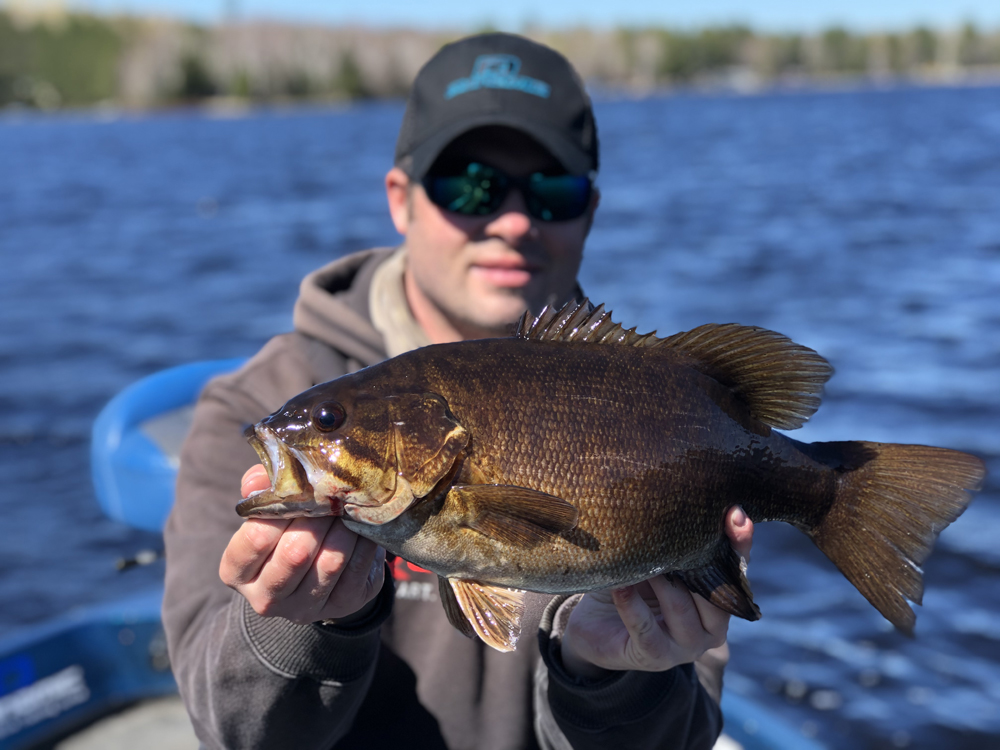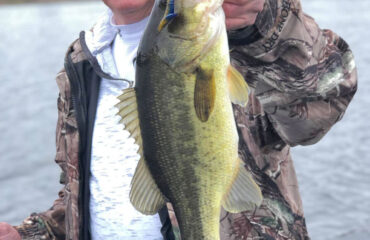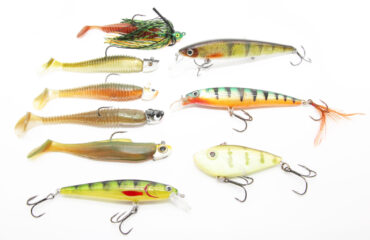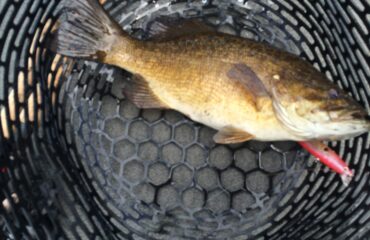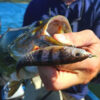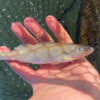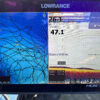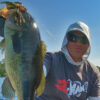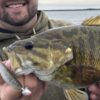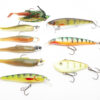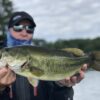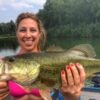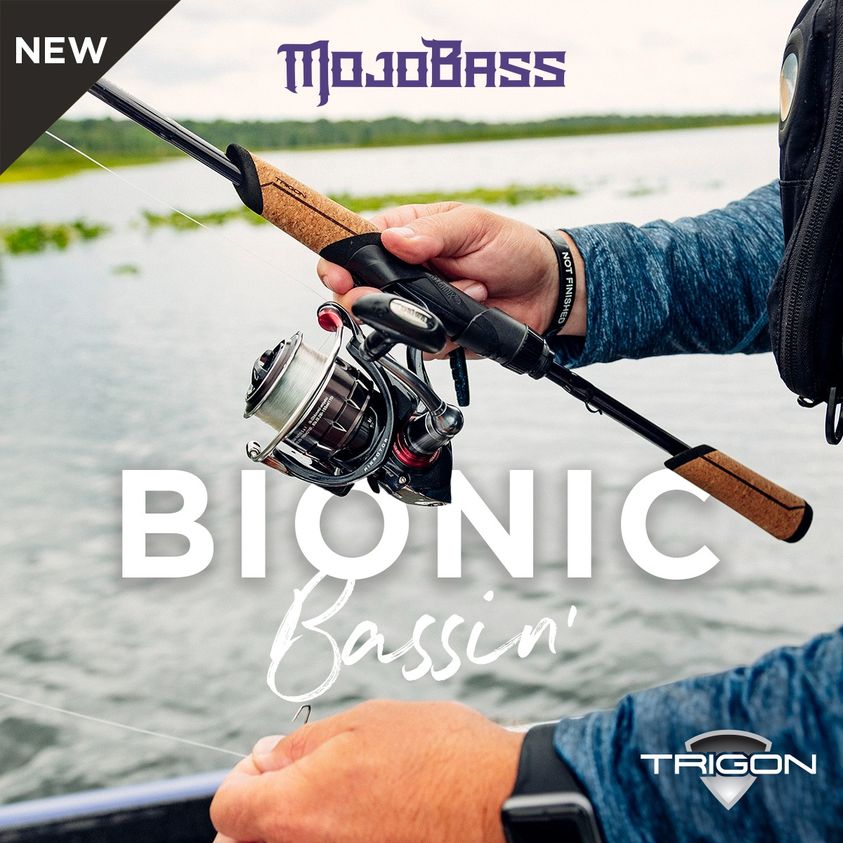Dynamic Lures J-Specs for Smallmouth Bass
The best bites for early spring smallmouths tend to occur in shallow, warming bays. But fish can also suspend and be in transit between wintering areas and spring locations. Typical of early spring, they will also concentrate along the base of breaks in deeper water leading up to shallow flats and spawning grounds that will be visited throughout the next few weeks. Meanwhile if winter is unrelenting, they can remain near wintering areas until the next warm-up. These congregations and locations will each vary by lake.
In early season, usually as early as mid-May, once water temperatures crest above 45 degrees, my best and most productive smallmouth bites of the year take place on lakes with rapidly warming shallow waters. On my inland lakes of Wisconsin, these early season bodies of water range anywhere from 100 to 500 acres in size – and definitely warm earlier than many of the larger lakes I fish most frequently. Flowages and river systems warm even quicker than lakes, and are tops too. Following ice-out, most bass anglers will miss out on a short window of opportunity for better-than-average smallmouth fishing.
When smallmouths leave their wintering holes and begin staging for the spawn, it’s best to be at the edges of rocky shoals and spawning flats waiting for them to arrive. When and where they will show up in the most heavily concentrated wolf packs is determined by wind and the warm undercurrents it creates, and the angle and placement of the sunlight above.
As the water warms a little further, smallmouths will gravitate closer toward the shallows, becoming even more aggressive and catchable. In these “in-between” zones encompassing 5 to 15 foot depths, fish identify with their staging sites and reposition themselves frequently. To best catch them, suspending jerkbaits will be the answer.
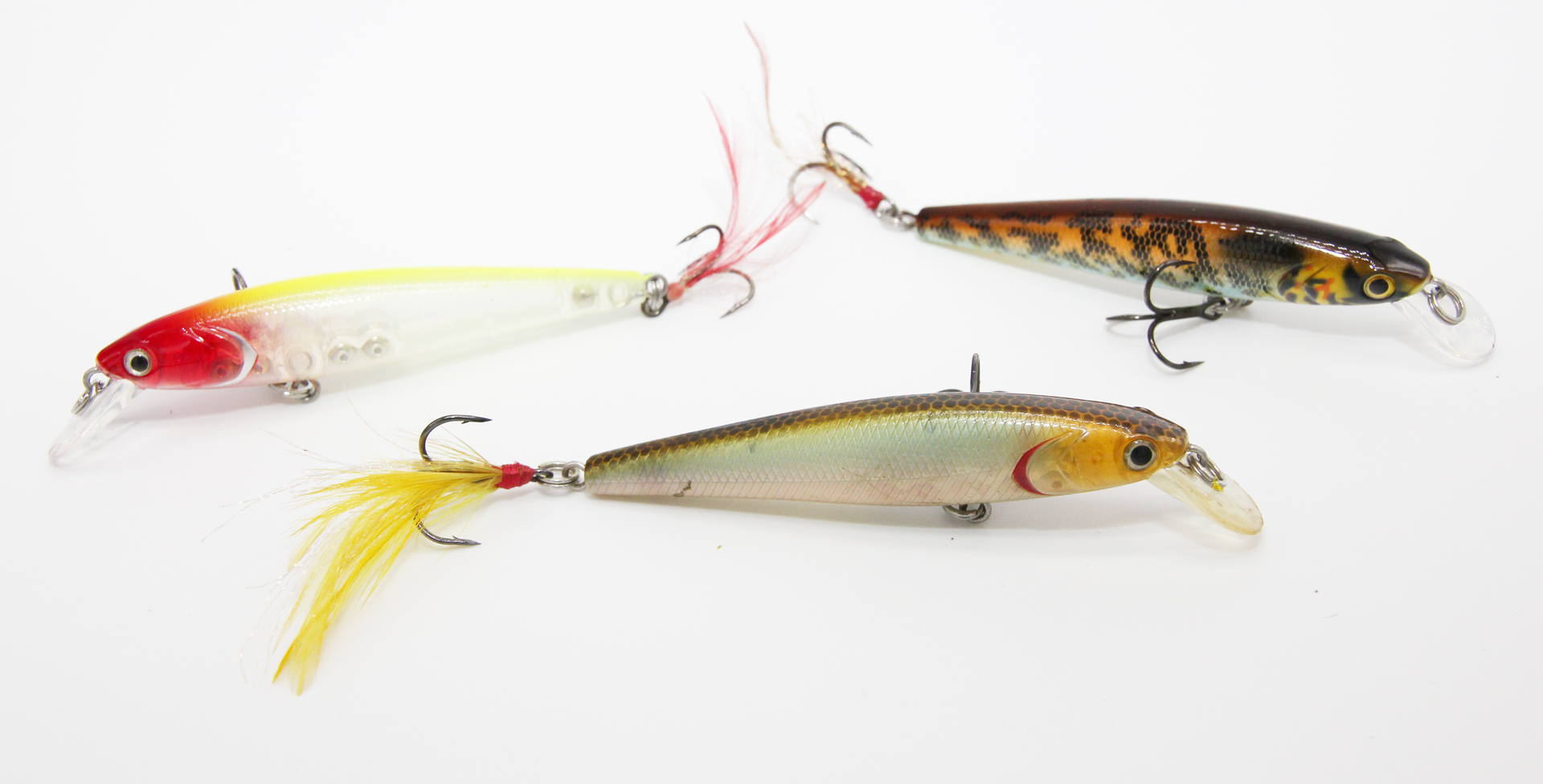
Every spring season, the Dynamic Lures J-Spec proves its versatility as an extreme action suspending jerkbait. Professionally designed with an action and feel that has been tested extensively, its unique size and shape produce an erratic action that triggers aggressive bites.
With great suspending action the J-Spec is a great choice to use when targeting smallmouth bass in the shallows, and casting for walleyes. The J Spec suspending jerkbait rivals the best suspending hard baits on the market today. My favorites are Ghost Fish, Goby, Clown, and Perch. The aggressiveness of each jerk and the length of the pause between them varies largely by water temperature and by the stage of any weather front pushing through. Cool water temperatures and post-frontal conditions call for a very slow approach while actively feeding smallmouths and warm water situations demand aggressive techniques.
Because water temperatures are still on the cold side, I am slow with my approach. The J-Spec is irresistible on a long pause in cold water. Instead of jerking, give them more subtle pulls to achieve depth. I’ll wait patiently in between pulls if necessary, upwards of 30 seconds. Rip downward to push it deeper.
Fish them slow and methodically to coax lethargic bites. Work too fast, and smallmouths will lazily drift back down towards the bottom.
I fish my suspending jerks on spinning rods such as St. Croix 7-foot MHF Avid-X (AVS70MHF) and 6-foot 8-inch Victory Tactical (VTS68MXF), and casting rod that includes a 6-foot 8-inch Victory The Jerk (VTC68MXF). The flex and sensitivity of these new Victory rods are in a league of their own. For spinning reels, I recommend a size-30 model with oversize spool to help achieve long casts. I still fish with straight 8 to 10 lb. copolymer lines. On the baitcaster meanwhile, 10 lb. and 12 lb. Seaguar Red Label fluorocarbon is the ideal choice.


